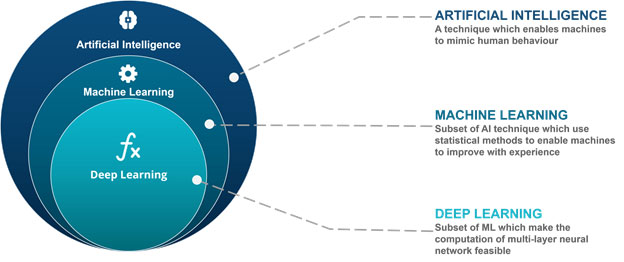Why Businesses Fail at Machine Learning
With machine learning and artificial intelligence becoming the buzz words, every company wants to integrate ML and AI technologies into their framework. But often these companies and firms fail at doing so or are only partially successful.

There are wide arrays of reasons why ML and AI projects fail, but the one core and common reason is the lack of knowledge with Machine Learning and its applications.
Machine Learning - A Mysterious Entity
Machine Learning has built a lot of mystery around it. People who are not aware or familiar with what machine learning is, ends up believing that it is the one-stop solution to every problem in the world. One of the best ways to make sure that your ML project doesn’t fail is to understand what it is, what its capabilities and limitations are.
Machine learning in actuality is very simple. Machine Learning is simply a tool to label unknown stuff with known labels.
To be more specific: machine learning labels stuff based on probabilities. There are two broad ways by which this happens:
- Supervised Learning: The labels are already known ahead of time before performing the task.
- Unsupervised Learning: The labels are not known until the task is performed.
Various procedures and algorithms are used within the two sub-categories dependent on the tasks to be performed.
Reasons for model failure:
- High Amount of False Positives
False positives are values which are labelled incorrectly to be in the concerned category whereas in reality they are not.
- Low understanding of underlying models with business
In the recent times, despite the growing needs for implementation of ML and AI techniques in business for model building, far too often due to the poor understanding, low knowledge, and the highly dynamic nature of businesses, the models become redundant over a short span of time.
- Low understanding of the business problem to be solved
Before attempting to solve the problem and building the models, one must understand the problem and explore all the different facets- skipping the ‘learning’ phase in attempt to save time will only result in poorly-built, underperforming models.
- Overly complex models
Sometimes in trying to make the models stronger, bivariates or trivariates are used. They, however, make the models unnecessarily and overly complex which leads to the opposite outcome, i.e., detrimental performance.
- Training set significantly being different from the testing set
In some case the models are created on training data or population, which is very dissimilar to the environment or the population with which the model is to be actually used with, leads to inaccurate results.
Measurement of Success in ML:
In implementing ML technologies one of the major concerns is the accuracy of prediction. Thus, it wouldn’t be incorrect to call ML an exercise in optimization. For ML projects, both technical measurements as well as business measurements must be kept in mind.
Technical Measurement deals models that are worth pursuing, whereas, Business Measurement helps one understand if the implementation is helping solve the problem.
In conclusion, a working knowledge and experience with practical applications are imperative precursory needs for a successful ML project in the corporate arena.